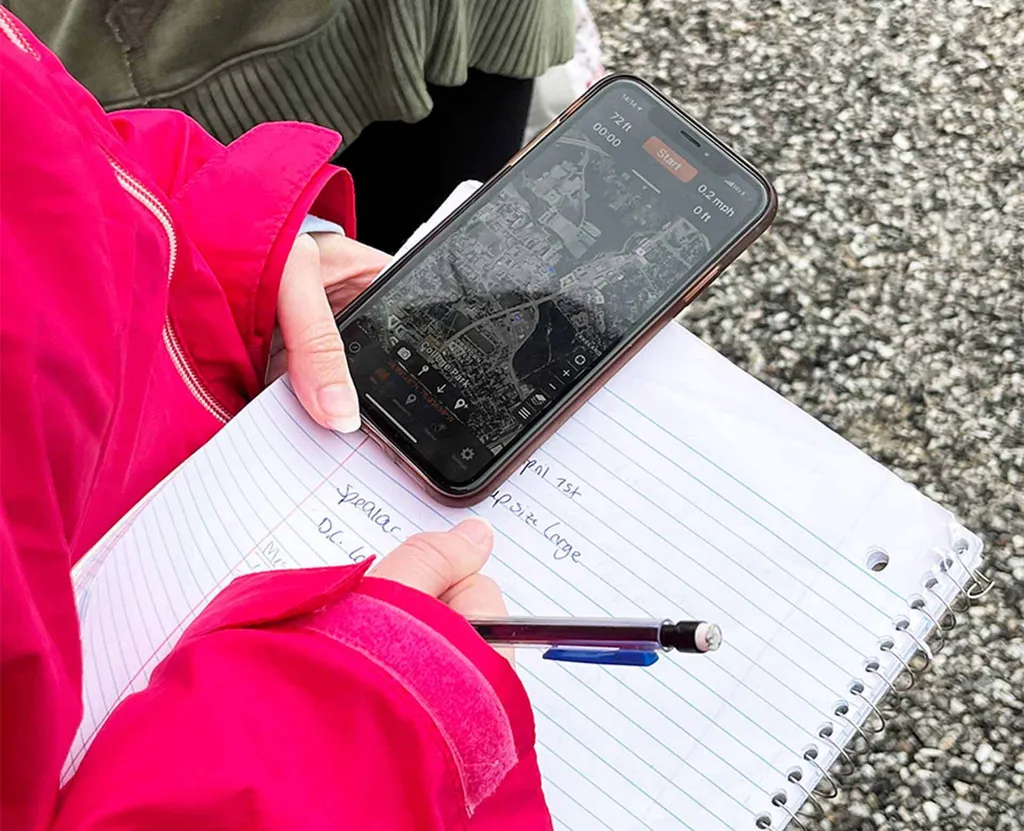- July 12, 2023
- By Emily C. Nunez
If you want to know the current temperature at the University of Maryland, you may need to get a little more specific: On one recent Wednesday afternoon, it was 75.6 degrees outside of the Atlantic Building, but a balmier 77.3 degrees at the A.V. Williams Building. The UMD Golf Course, with its ample grass and open space, was cooler than either.
Students in the Department of Atmospheric and Oceanic Science (AOSC) made these hyperlocal weather reports possible by installing and managing a micronet—a small-scale network of weather sensors—across UMD’s campus. The project is funded by the department; the Maryland and Delaware Climate Change Education, Assessment and Research program (MADE-CLEAR); and a gift from Adjunct Professor Robert Brammer M.A. ’70, Ph.D. ’72.
Three weather stations provide minute-by-minute updates on the temperature, wind speed, pressure, dew point and rain rate. Students plan to install seven more stations across campus in the near future and perhaps even allow subscribers to receive alerts about heavy rainfall or high winds—like a powerful storm that clamored across campus one year ago today. With peak wind speeds of 80 to 90 mph, it left a trail of uprooted trees and power outages (but no injuries) in its wake.
“We know that bad weather hits campus, whether it’s tornadoes or microbursts or snow,” said Associate Professor Timothy Canty, faculty lead of the micronet project. “Having this information—and having so many stations in such a small area—provides a much more detailed look at what’s going on.”

The Department of Atmospheric and Oceanic Science purchased the weather stations for the micronet program several years ago, but the COVID-19 pandemic thwarted installation plans. When Canty mentioned the stalled project during his “Weather and Climate” class in Spring 2022, it piqued the interest of AOSC and mathematics double-degree student Maria Nikolaitchik.
“I’m a data nerd, and it sounded like a lot of cool data to see and set up,” said Nikolaitchik, now the project’s student lead. “I thought, ‘OK, let’s give this a shot and see what we can cobble together.’”
Over time, other students got involved and formed a group called the Mesoterps in homage to weather terminology. In May, they helped install the newest weather station—basically a small pole bristling with a variety of monitoring equipment—atop the A.V. Williams Building, while also handling the logistics of processing, storing and communicating the incoming weather data to a wider audience.
Malcolm Maas ‘23, a physics and AOSC double-degree student, helped create user-friendly graphs to visualize the weather data pouring in. These hyperlocal weather graphs, displayed on the UMD Weather website, are already proving helpful to members of UMD’s community who are frequently out in the elements—particularly rain rate graphs, Maas said.
Brian Trest, manager of the Facilities Management (FM) Incident Response Unit, said the micronet provides real-time campus weather data that has never before existed.
“Over the years, we have found that the publicly available weather data from commercial and public sources were not accurate enough for our needs on campus,” Trest said. “For FM’s Incident Response Unit, summer thunderstorms have been troublesome over the past few years.”
The micronet also complements a larger initiative called the Maryland Mesonet. Announced last October as a partnership between the state of Maryland and UMD, the Mesonet will be a network of 75 weather observation towers across the state to help agencies and first responders prepare for dangerous weather, among other functions. Between the statewide Mesonet and campus micronet, the influx of hyperlocal weather data will address community-level needs.
The Mesoterps are already scouting locations for their next weather station, with hopes of placing it on the southern end of campus. In the long run, the team hopes to add other features to the network to monitor air quality— top of mind for many on campus this summer during a “Code Red” quality alert due to the wildfires raging in Canada.
“Campus is a constantly growing place, so the micronet allows us to continue to monitor different aspects of campus, especially with increasing wildfires and these sudden changes we’re experiencing,” she said.
Canty said that once the full campus learns about the micronet’s potential, it could inspire a number of student research projects—and not just in AOSC.
“The more people who use this, the better it is for everybody,” he said.
